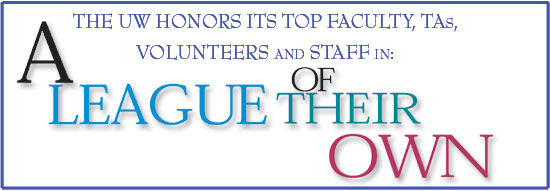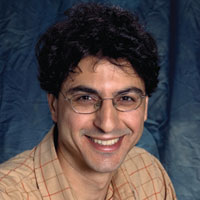

Distinguished Teaching Award
 Mehran Mesbahi
Mehran Mesbahi
Professor, Department of Aeronautics and Astronautics
Students in Mehran Mesbahi's Orbital and Spaceflight Mechanics course study Johannes Kepler's three laws of planetary motion, explaining how planets and comets orbit around the sun. They also learn the human part of the story: how Kepler came up with the laws, how many tries it took before he got it right and how radical his ideas seemed at the time.
Kepler wrote poetry, which Mesbahi reads in class. "He was deeply involved in attempts to understand nature. He was looking for a universal beauty in nature. I think many people connect with that desire. When I attach the theorems to this desire, students remember it," Mesbahi says. "I truly believe there is beauty in the technical aspects." He wants students to remember the driving force behind the science, "the human desire to understand nature and its beauty."
Mesbahi teaches students about the early scientists who formulated the basis of their profession: Copernicus, Galileo, Brahe, Kepler and Newton. "The lives of the scientific giants provide an opportunity for exposing the students to how science is actually done," writes one of Mesbahi's colleagues, "not as a glorious, smooth path to a discovery, but often through unusual self-determination, controversies and rivalries."
Mesbahi introduces the historical, cultural and political background behind science through the use of poetry, literature, movies and newspaper articles. He talks about the long-held desire of humans to travel to other planets. "From our childhood there was always this unknown universe outside the earth-the stars and interplanetary travel," explains Mesbahi.
Studying Kepler, who left detailed accounts of the many errors he made before arriving at the correct natural laws of planetary motion, offers a chance to show students that making mistakes is part of the process of discovery. "Students should be involved in seeing that engineering is not done in one shot," Mesbahi says. "What you see as the final structure was destroyed many times before you get the final product."
In the classroom, Mesbahi draws on his experience working at Cal-Tech's Jet Propulsion Laboratory (JPL) on projects such as the Cassini mission to Saturn. Although he's conducting five research projects funded by JPL, Boeing and the National Science Foundation (NSF), Mesbahi is just as committed to teaching. He has gathered many awards for teaching and research, including an award as a teaching assistant at the University of Southern California, an NSF Career Award and last year being voted professor of the year by students in his department.
Mesbahi teaches in a classical style, lecturing in front of the class and using a blackboard, overhead transparencies and PowerPoint presentations, reports his department chair. "But he does so in a way that establishes a unique one-to-one bond between him and each student in the classroom. It is a remarkable phenomenon. . Each of his students, no matter whether the class is comprised of 60 undergraduates or 10 graduate students, regards Mehran as his or her own 'personal professor' and trusted mentor."
Mesbahi's students appreciate the care with which he challenges them. One student comments, "I have never had a course where the difficulty enhanced the desire for knowledge." Another writes, "This class was very, very interesting. It stretched my mind beyond repair."-Beth Luce